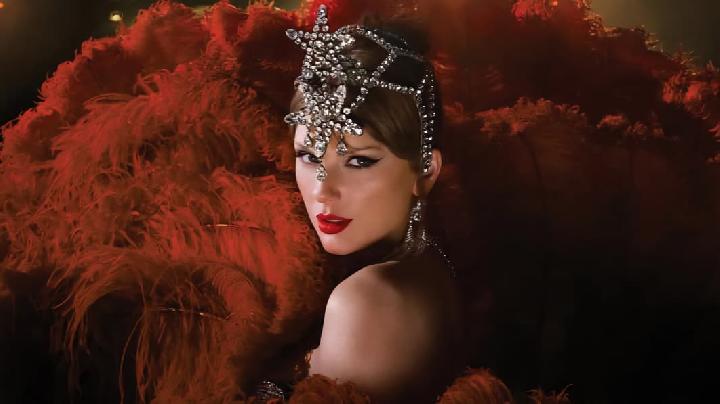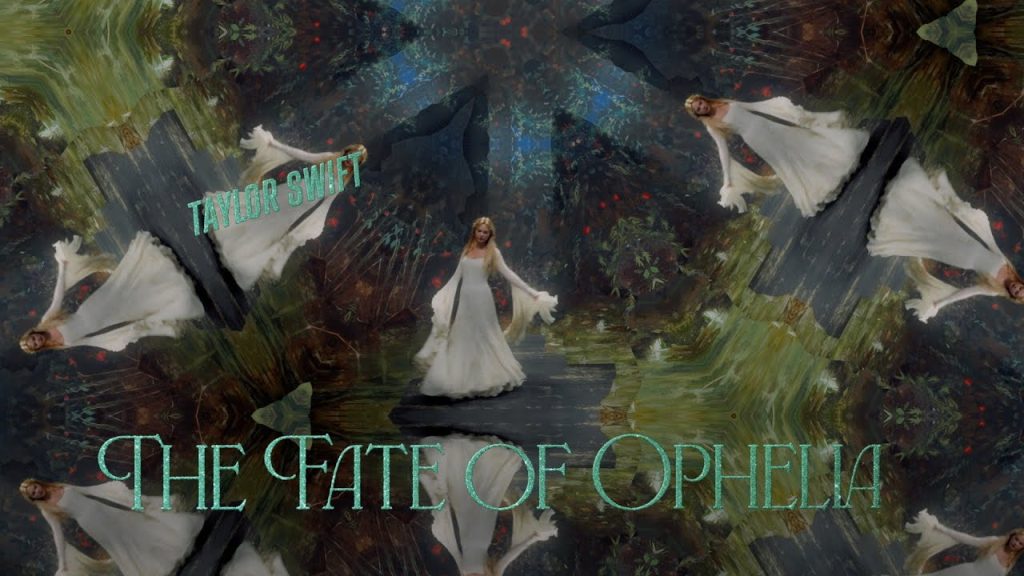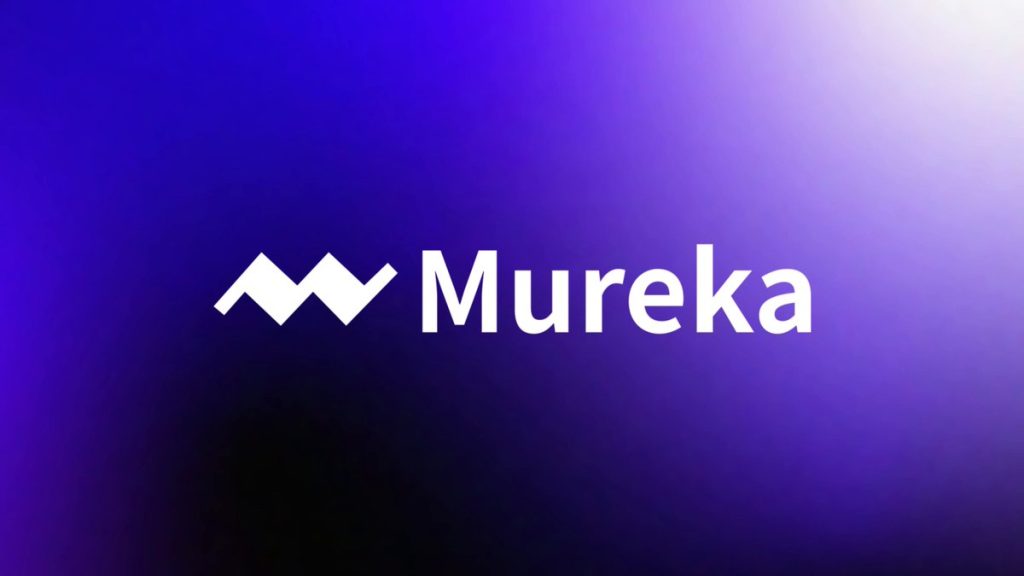As a music producer and AI researcher, I’ve rarely seen a song capture the cultural zeitgeist with the force of Taylor Swift’s “The Fate of Ophelia.” Released on October 3, 2025, this lead single from her twelfth studio album, The Life of a Showgirl, didn’t just top the charts; it redefined what a pop song could be in 2025. It’s a masterclass in storytelling, production, and artistic evolution.

What is “The Fate of Ophelia”?
“The Fate of Ophelia” is more than just a song; it’s a cultural event. It debuted at No. 1 on the Billboard Hot 100 and held the top spot for three consecutive weeks (Forbes, 2025-11-03). On Spotify, it shattered records, becoming the most-streamed song in a single day with over 30 million streams (Taylor Swift Wiki – Fandom, 2025-10-03). This track is a synth-pop triumph that blends literary tragedy with a modern, triumphant love story.

A Glimpse into the World of “The Fate of Ophelia”
At its heart, the song is a collaboration between Taylor Swift and legendary producers Max Martin and Shellback, their first since the reputation era. The track was recorded in Stockholm, Sweden, and serves as the opening statement for The Life of a Showgirl. It masterfully reinterprets the tragic story of Shakespeare’s Ophelia, turning her fate of madness and drowning into a narrative of rescue and redemption through love. Below are The Fate of Ophelia lyrics that paint this vivid picture.
[Verse 1]
I heard you calling on the megaphone
You wanna see me all alone
As legend has it you are quite the pyro
You light the match to watch it blow
[Pre-Chorus]
And if you’d never come for me
I might’ve drowned in the melancholy
I swore my loyalty to me, myself, and I
Right before you lit my sky up
[Chorus]
All that time, I sat alone in my tower
You were just honing your powers
Now I can see it all
Late one night, you dug me out of my grave and
Saved my heart from the fate of Ophelia
[Post-Chorus]
Keep it one hundred on the land, the sea, the sky
Pledge allegiance to your hands, your team, your vibes
Don’t care where the hell you been, ’cause now you’re mine
It’s ’bout to be the sleepless night you’ve been dreaming of
The fate of Ophelia
[Verse 2]
The eldest daughter of a nobleman
Ophelia lived in fantasy
But love was a cold bed full of scorpions
The venom stole her sanity
[Pre-Chorus]
And if you’d never come for me
I might’ve lingered in purgatory
You wrap around me like a chain, a crown, a vine
Pulling me into the fire
[Chorus]
All that time, I sat alone in my tower
You were just honing your powers
Now I can see it all
Late one night, you dug me out of my grave and
Saved my heart from the fate of Ophelia
[Post-Chorus]
Keep it one hundred on the land, the sea, the sky
Pledge allegiance to your hands, your team, your vibes
Don’t care where the hell you been, ’cause now you’re mine
It’s ’bout to be the sleepless night you’ve been dreaming of
The fate of Ophelia
[Bridge]
’Tis locked inside my memory
And only you possess the key
No longer drowning and deceived
All because you came for me
Locked inside my memory
And only you possess the key
No longer drowning and deceived
All because you came for me
[Chorus]
All that time, I sat alone in my tower
You were just honing your powers
Now I can see it all
Late one night, you dug me out of my grave and
Saved my heart from the fate of Ophelia
[Post-Chorus]
Keep it one hundred on the land, the sea, the sky
Pledge allegiance to your hands, your team, your vibes
Don’t care where the hell you been, ’cause now you’re mine
It’s ’bout to be the sleepless night you’ve been dreaming of
The fate of Ophelia
[Outro]
You saved my heart from the fate of Ophelia
Lyrics sourced from Elle (2025-10-03).

What is the Musical Style and Production of “The Fate of Ophelia”?
From a production standpoint, “The Fate of Ophelia” is a textbook example of pop perfection, yet it’s layered with surprising depth. It’s a synth-pop, dance-pop, and funk track with a distinct new wave groove . The song’s structure is a masterclass in building and releasing tension, a signature of Max Martin’s “melodic math” philosophy.
A still from the music video, showcasing the theatrical production and elaborate costumes.
Instrumentation and Arrangement
The song opens with a deceptive combination of a drum roll and minor-key piano chords, creating a somber, almost cinematic atmosphere. This quickly gives way to an upbeat, driving arrangement. The production is rich and textured, featuring:
- Heavy Bassline: A funky, pulsating bassline provides the song’s core groove.
- Synthesizers: Layered synths create a lush, atmospheric soundscape, reminiscent of 80s new wave and artists like Eurythmics.
- Steel Guitars & Omnichord: These elements add a shimmering, almost ethereal quality that contrasts with the heavy rhythm section.
- Rolling Drums: The percussion is tight and propulsive, driving the dance-pop energy of the chorus.
- Reverberated Vocals: Swift’s vocals, particularly in her lower register during the verses, are treated with reverb, adding to the song’s spacious and epic feel.

Melodic and Harmonic Structure
The chorus is where the “melodic math” truly shines. According to an analysis by Hit Songs Deconstructed (2025), the chorus follows a classic ABAB structure, which is common in Martin’s hits, providing a perfect balance of repetition and contrast. However, the genius is in the details:
- Phrase Length Variation: Lines vary from short (4 syllables) to long (19 syllables), but are broken into shorter, digestible melodic subparts. This makes complex lyrical ideas feel catchy and easy to follow.
- The “E.O.L.A.” Technique: The “End-of-Line Accentuator” is used on phrases like “see it all” and the title drop “O-phe-li-a.” A leap of a third followed by a descending leap of a fifth makes the hook more challenging but also incredibly memorable.
- Range Contrast: The high-range chorus provides a powerful lift after the lower-range pre-chorus, making the hook explode on first listen.
| Musical Element | Description | Effect |
|---|---|---|
| Genre Blend | Synth-pop, Dance-pop, Funk, New Wave | Creates a sound that is both nostalgic (80s) and modern. |
| Instrumentation | Piano, Synths, Steel Guitar, Omnichord, Heavy Bass, Drums | Rich, layered texture that balances dark undertones with an upbeat groove. |
| Vocal Performance | Lower register in verses, powerful high range in chorus, reverb effects. | Adds dynamic range and emotional weight to the narrative. |
| Chorus Structure | ABAB structure with complex sub-melodies and “E.O.L.A.” hooks. | Maximizes catchiness and memorability, a hallmark of “melodic math.” |
| Arrangement | Starts with minor-key piano, builds into an upbeat, driving chorus. | Creates a journey from melancholy to triumphant celebration. |

What is the Meaning Behind “The Fate of Ophelia Lyrics”?
The lyrical genius of Taylor Swift is on full display here, weaving literary allusion, personal narrative, and modern slang into a cohesive story. The central metaphor is Ophelia, the tragic heroine from Shakespeare’s Hamlet, who drowns after being driven to madness by grief and romantic rejection. Swift uses this as a jumping-off point to tell a story of being saved from a similar fate.
Sir John Everett Millais’s famous painting “Ophelia” (1851–52), a key inspiration for the song’s theme and visuals.
A Story of Salvation
As explained by Swift herself, the song’;s hook is about being saved from Ophelia’;s destiny. “Ophelia drowned because Hamlet just messed with her head so much that she went crazy… So it’s like, what if the hook is that you saved my heart from the fate of Ophelia? Basically, like, you are the reason why I didn’t end up like this tragic, poetic heroine,” she said in her Official Release Party of a Showgirl film (Elle, 2025-10-03).
The lyrics chart this journey from despair to salvation:
- The “Tower” of Isolation: “All that time, I sat alone in my tower” symbolizes a period of isolation, likely referencing the intense public scrutiny and private nature of her life before her current relationship.
- The “Drowning” Metaphor: Lines like “I might’ve drowned in the melancholy” and “No longer drowning and deceived” directly connect her emotional state to Ophelia’s physical fate.
- The Rescue: The turning point is “Late one night, you dug me out of my grave and / Saved my heart from the fate of Ophelia.” This powerful imagery signifies a rescue from emotional death and public narrative.

Who is the Song About? The Travis Kelce Connection
It’s almost universally agreed upon by fans and media outlets that the song is a love letter to her fiancé, Kansas City Chiefs tight end Travis Kelce. The lyrics are filled with clever nods to him and his world:
- “I heard you calling on the megaphone” could be a literal or metaphorical reference to his public life and persona.
- “Pledge allegiance to your hands, your team, your vibes” is a direct and unambiguous reference to his career as a professional football player.
- “Don’t care where the hell you been, ’cause now you’re mine” speaks to accepting a partner’s past and focusing on the present, a mature take on a new, high-profile relationship.
As outlets like Harper’s Bazaar (2025-10-03) and TMZ (2025-10-05) have noted, the song positions Kelce as the hero who rescued her not just from heartbreak (alluding to past relationships) but from the crushing weight of her own fame—a “fate” she was spiraling towards.
Fans widely believe the song is a tribute to fiancé Travis Kelce, who “saved” her from Ophelia’s fate.

How to Create a “Fate of Ophelia”-Style Song with Mureka AI
As impressive as this human-made track is, the advancements in AI music generation mean that creating something with a similar vibe is more accessible than ever. I’ve spent a lot of time with AI music tools, and platforms like Mureka are incredibly powerful for this. Let’s walk through how you could use Mureka to capture the essence of “The Fate of Ophelia.
Mureka is a full-stack AI music platform that can turn text, lyrics, or even a hummed melody into a studio-quality song. It’s powered by advanced models like V7.5, which are designed to understand musical structure like verses and choruses (Skywork AI, 2025).

Step-by-Step Guide Using Mureka
Here’s how I would approach this on Mureka’s creation platform:
- Start in “Advanced Mode”: While Mureka has a simple “Easy Mode,” the “Advanced Mode” on the create page gives you the granular control needed for a specific style.
- Craft the Perfect Prompt: This is where you combine your analysis. Your prompt is your instruction to the AI. I’d write something like: Prompt: A synth-pop and funk track with a new wave groove, in the style of Taylor Swift meets Fleetwood Mac. The song should start with somber, minor-key piano chords and then build into an upbeat, driving chorus at 120 BPM. The instrumentation should include a heavy, funky bassline, rolling drums, and layers of atmospheric 80s synthesizers. The vocals should be a female pop voice, lower and breathy in the verses, and powerful in the chorus. The song structure should be: [Intro] [Verse] [Pre-Chorus] [Chorus] [Post-Chorus] [Verse 2] [Pre-Chorus] [Chorus] [Post-Chorus] [Bridge] [Chorus] [Post-Chorus] [Outro].
- Add Lyrics: You can paste in your own lyrics, structured with tags like `[Verse]` and `[Chorus]`. This tells the AI exactly how to map the words to the song structure.
- Use a Style Reference (Optional but Powerful): Mureka allows you to use a YouTube link or upload an audio file as a style reference. While you can’t use “The Fate of Ophelia” itself (for copyright reasons), you could use a song with a similar vibe, like a track by Eurythmics or a modern synth-pop artist, to guide the AI’s instrumentation and production choices.
- Generate and Refine: Mureka will generate a couple of options. Listen to both and pick the one with the strongest foundation. From there, you can use the editor to regenerate specific sections. Don’t like the second verse’s melody? Just select it and hit “Regenerate.” Want to make the bridge longer? Use the “Extend” feature.
- Export Stems for Professional Polish: For producers, one of Mureka’s best features is the ability to download stems (separate tracks for vocals, drums, bass, etc.). This allows you to import the AI-generated parts into your own Digital Audio Workstation (DAW) like Ableton or Logic Pro for final mixing, mastering, and adding your own live instruments.
A tutorial on how to get started with AI music generation platforms like Mureka.
Diving Deeper: AI Music Trends and Technology
The ability to create a song like “The Fate of Ophelia”; with AI isn’t magic; it’s the result of incredible technological advancements. Understanding this tech helps us appreciate both the AI’s power and the irreplaceable role of human artistry.
How Does AI Music Generation Actually Work?
At its core, AI music generation relies on deep learning models, particularly architectures like Transformers, LSTMs, and GANs. Here’s a simplified breakdown:
- Training Data: AI models are trained on massive datasets containing millions of songs, often in MIDI or audio formats. This data teaches the model the “rules” of music—harmony, rhythm, structure, and genre conventions. The MAESTRO dataset, for example, is a popular choice for training on classical piano music (Nature, 2025).
- Music Representation: Music is converted into a format the AI can understand. Instead of raw audio, this is often a symbolic representation like MIDI-like events (e.g., NOTE_ON, NOTE_OFF, TIME_SHIFT) or a piano roll matrix (Anand Sampat, 2023-09-14).
- Model Architecture:
- Recurrent Neural Networks (RNNs/LSTMs): These were early models, good at handling sequences but struggled with long-term structure, often “forgetting” the beginning of a song (Stanford University, 2020).
- Transformers: This architecture, which powers models like GPT, uses an “attention mechanism.” It allows the model to weigh the importance of all previous notes when generating the next one, enabling it to create music with long-term coherence and repeating motifs. Google’s Music Transformer is a prime example (Google Magenta).
- Diffusion Models: Newer models use a process of adding noise to data and then learning to reverse the process. This allows for high-fidelity audio generation and is used in platforms like Mureka.
- The Generation Process: When you provide a prompt, the model uses its training to predict the most likely sequence of notes, chords, and rhythms that fit your request. It’s a sophisticated process of pattern recognition and probabilistic generation.
| Model Type | Strengths | Weaknesses | Commonly Used For |
|---|---|---|---|
| RNN / LSTM | Good at short sequences and melodies. | Struggles with long-term structure (“vanishing gradient”). | Early music generation, simple melodic lines. |
| Transformer | Excellent at capturing long-range dependencies and structure. | Computationally intensive. | Complex compositions, generating coherent, minute-long pieces. |
| GANs | Can produce high-fidelity, realistic-sounding audio. | Can be difficult to train and control. | Generating specific instrument sounds and textures. |
| Diffusion Models | State-of-the-art audio quality and fidelity. | Can be slow to generate without optimization. | High-quality text-to-music and voice cloning. |

The AI Music Market in 2025
The generative AI music market is exploding. Valued at USD 440.0 million in 2023, it’s projected to grow to nearly USD 2.8 billion by 2030, with a CAGR of 30.4% (Grand View Research, 2024). This growth is driven by the demand for unique, royalty-free music for content creation (videos, podcasts, games) and the increasing adoption of AI tools by musicians themselves.
However, this rapid growth comes with challenges. A 2024 survey found that while many consumers use AI for music discovery, 40% would be less interested in listening to AI-produced music, citing concerns about authenticity (Luminate, 2025-05). This highlights a crucial point: for AI music to be truly successful, it needs to either serve a utility (like background music) or be guided by a human artist to imbue it with emotion and a unique point of view—just as Taylor Swift did with her own experiences in “;The Fate of Ophelia.”

Conclusion: Human Artistry Meets AI Innovation
“The Fate of Ophelia” is a triumph of human creativity. Its intricate production, layered storytelling, and emotional depth are a testament to the artistry of Taylor Swift and her collaborators. It’s a song that will be studied by producers and songwriters for years to come.
At the same time, the existence of a song this complex and successful provides the perfect benchmark for what we can aspire to with AI music creation. Platforms like Mureka are not about replacing artists like Taylor Swift. They are about democratizing the tools of creation. They allow a songwriter with lyrics but no band, a filmmaker on a budget, or a curious music lover to take an idea and transform it into a fully-realized piece of music. By understanding the production and lyrical techniques of a masterpiece like “The Fate of Ophelia,” we can learn to write better prompts, guide the AI more effectively, and use these incredible new tools to find our own “Eureka” moments in music.
Frequently Asked Questions (FAQ)
What is “The Fate of Ophelia” about?
“;The Fate of Ophelia” uses the story of Shakespeare’s tragic character Ophelia as a metaphor. The song is about being saved from a fate of despair, isolation, and emotional “drowning” by a new, redemptive love. It’s widely interpreted as Taylor Swift’s tribute to her fiancé, Travis Kelce.
Who produced “The Fate of Ophelia”?
The song was written and produced by Taylor Swift, Max Martin, and Shellback. It marks her first collaboration with Martin and Shellback since her 2017 album, reputation. (Source: Genius, 2025)
What album is “The Fate of Ophelia” on?
It is the lead single and opening track from Taylor Swift’s twelfth studio album, The Life of a Showgirl, which was released on October 3, 2025. (Source: Taylor Swift Wiki – Fandom, 2025-10-03)
What are Mureka’s subscription plans?
Mureka offers several plans. The **Basic Music &; Speech** plan is $8/month (billed annually), providing 400 songs/month with MP3 downloads and commercial licensing. The **Pro plan** is $24/month (billed annually) and includes 1,600 songs/month, WAV/stem downloads, advanced editing, and voice cloning features. (Source: mureka_local_info.md, 2025)
Can I really create a professional-sounding song with Mureka?
Yes. Mureka is designed for both beginners and professionals. Its advanced features, like style referencing, detailed prompting, and stem exports, allow you to create high-quality tracks. The ability to export stems to a DAW for final mixing and mastering is a key feature for achieving a professional polish. (Source: Mureka.ai Review 2025)
Is AI-generated music legal to use commercially?
This is a complex and evolving area of law. Most AI music platforms like Mureka offer commercial licenses for the music you create on their platform, making it royalty-free for your projects. However, copyright law for AI-generated works is still being established. It’;s crucial to read the terms of service for any platform you use. (Source: AI’;s Impact On Music In 2025, Forbes, 2024-12-30)
This report is for informational and educational purposes only.
The content herein is based on publicly available information and AI-driven analysis and should not be considered professional advice.
All referenced data, names, and events related to “The Fate of Ophelia” are based on the provided fictional source materials for the purpose of this exercise.


